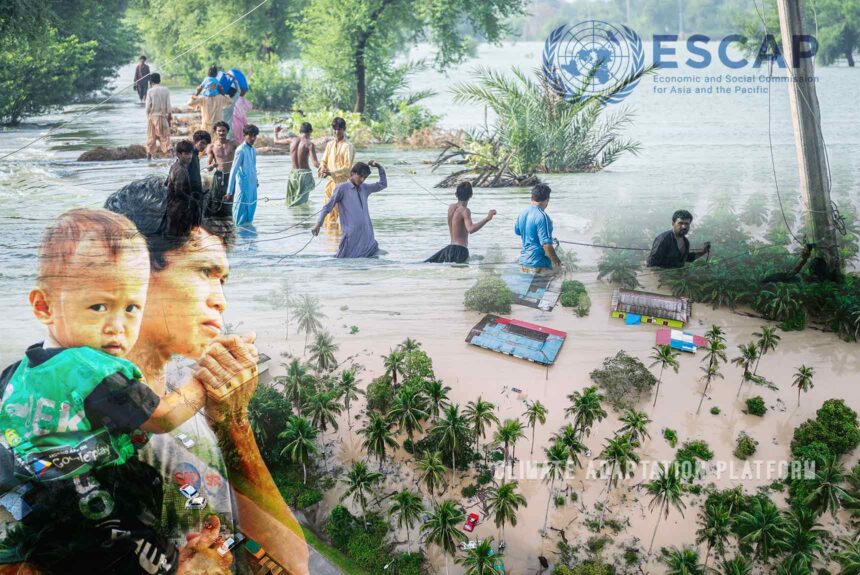Findings in the “Race to Net Zero: Accelerating Climate Action in Asia and the Pacific” report revealed that countries in the region lack the sizeable financial means to support adaptation and mitigation efforts and the data necessary to inform climate action.
The Economic and Social Commission for Asia and the Pacific (ESCAP) report, published on 7 April 2023, was launched just ahead of the commission’s 79th session from 15 to 19 May, which convened heads of state, ministers, senior government officials, and key stakeholders in Bangkok to explore policy options and establish ambitious climate targets to be on the path of the net-zero pathways.
The ESCAP study sets out an ambitious agenda – to contain temperature rises to 1.5°C and realize net-zero emissions by mid-century and, most importantly, how to achieve the needed transformation in three key sectors:
- Weaning the energy sector from its coal dependency and phasing out other fossil fuels.
- Supporting low-carbon mobility and logistics.
- Accelerating low-carbon transition of industries and how international trade and investment can support it.
The report outlines concrete proposals, policies, and actions on how to finance these major shifts and how to measure the challenges and progress better.
The following are the study highlights:
- The past 60 years have seen a rapid rise in temperatures in Asia and the Pacific, more than the global mean leading to more frequent and intense extreme events.
- Six of the ten most vulnerable countries are in the region. These disasters are causing disruptions in food systems, damaging economies, and undermining societies.
- While the region greatly suffers from climate change consequences, it is also a key violator; over half of the world’s GHG emissions come from the area, and their share is rising as populations grow and fossil fuels power economies.
- The rising number of extreme weather events like cyclones, floods, heatwaves, and droughts has caused an average annual economic loss of around $780 billion, heightening poverty levels in the region. These losses are projected to increase by up to $1.1 to 1.4 trillion. Regarding GDP loss, Small Island Developing States will shoulder the heaviest burden regarding economic losses.
- Most countries in Asia and the Pacific countries need to be more prepared, lacking the financial means to support climate adaptation and mitigation efforts and the data necessary to inform climate action. In some developing countries in the region, around $362 billion ($258 billion for mitigation and $104 billion for adaptation) is needed. New green financial instruments and bonds are encouraging. Still, a whole-of-government approach is required to deliver adequate climate financing.
- In 2020, 85% of the region’s primary supply came from fossil fuels, where coal accounted for 40%. Limiting temperature rise to 1.5°C means fossil fuels, including oil and gas, must be radically phased down by 2050, with coal wholly phased out.
- Investments in renewable energy infrastructure and technical capacities need to be scaled up; this also requires restructuring national energy systems. Cross-border electricity grids can increase the share of renewable energy in the region.
- Putting the transport sector on a low-carbon pathway remains challenging. Transport emissions have increased by 200% over the past three decades due to the region’s rapidly growing passenger and freight transport demand. To reach net-zero carbon by 2050, CO2 emissions from transport must decrease by at least 3% annually. Transition to a low-carbon pathway is possible through policy changes in the report.
- Manufacturing and construction remain the region’s highest GHG emitter, accounting for nearly three-quarters of global emissions in manufacturing and construction, aided by the displacement of production from countries with stricter environmental policies to countries with more lenient requirements. International trade and investment can support this transition within a global rules-based framework, including disseminating technologies to make production less carbon-intensive.
If the urgency is apparent, the context is challenging. “Measures to put the economies of Asia and the Pacific on a low-carbon pathway, and adapt and become more resilient to the impacts of climate change, must be front and centre of the region’s post-pandemic recovery,” said Armida Salsiah Alisjahbana, United Nations Under-Secretary-General and Executive Secretary of ESCAP.
She acknowledged that governments in the region are joining the race to net zero under challenging circumstances from the current polycrisis.
Read the report: The Race to Net Zero: Accelerating climate action in Asia and the Pacific
Source:
Asia and the Pacific unprepared to face climate-induced catastrophes, warns new UN study. UNESCAP. Retrieved from https://www.unescap.org/news/asia-and-pacific-unprepared-face-climate-induced-catastrophes-warns-new-un-study



Leave a Reply